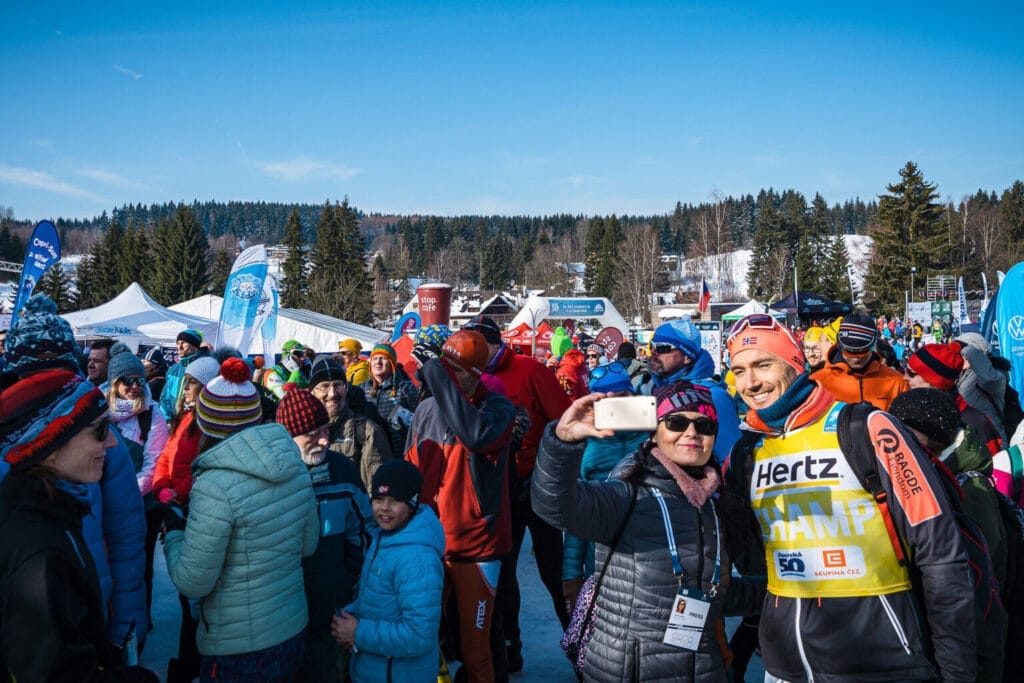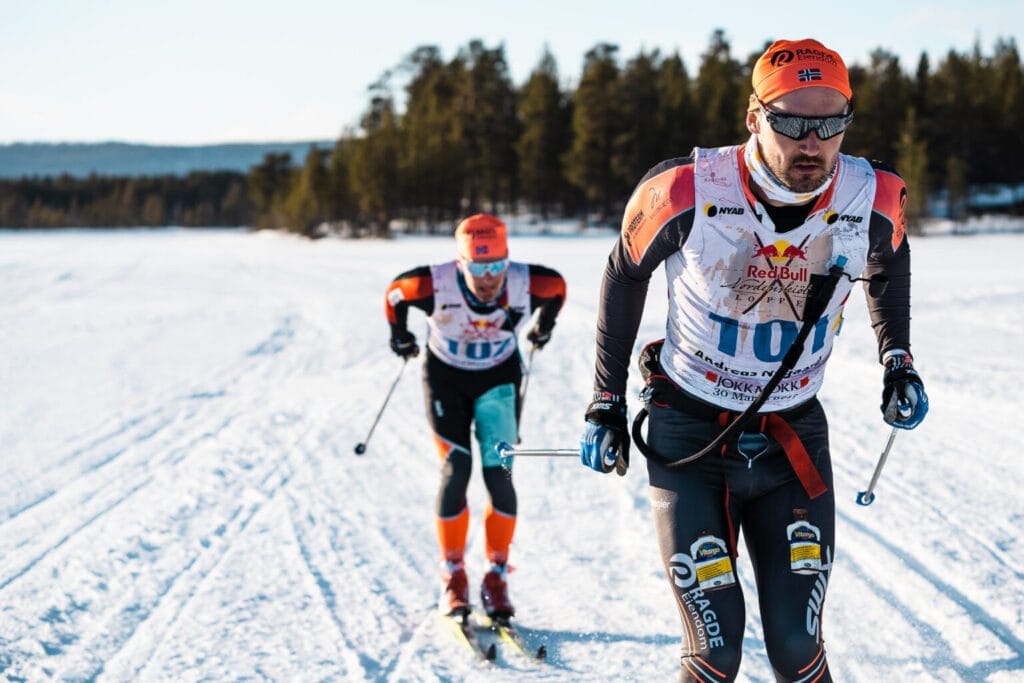Andreas Nygaard sounds upbeat and chatty on the phone again. However, the skier has faced some challenges recently due to having his appendix removed, which has required him to keep his training quite moderate. He is taking a week to rest completely and for the next month, he’s advised against jumping on roller skis. His workout regimen will begin with indoor cycling and walking, gradually moving on to sport-specific exercises.
There’s also reason to celebrate for this skiing champion, as he recently got engaged to his girlfriend, with plans to marry next summer. Currently, he has paused his medical studies at the University to concentrate fully on his skiing career. With his 34th birthday approaching in November, he feels this is still an excellent age for a long-distance skier, justifying his focus on the sport.
Andreas boasts an impressive career in the Ski Classics series, achieving victories in various Pro Tour races for eight consecutive seasons. His current win total is 19, making him the second most successful skier of all time, following Britta Johansson Norgren. Moreover, he is a three-time overall champion, a two-time winner of Vasaloppet, and a three-time winner of Birkebeinerrennet, with all these triumphs coming consecutively, the latest being from this winter.
Despite these outstanding achievements, Andreas doesn’t see himself as the most gifted athlete in the sport.
“I may not be the most talented in this sport, but clearly, I must be doing something right since I’ve found success. My training philosophy is quite simple, guided by the KISS method: Keep It Simple, Stupid! I understand what my body needs to excel in the winter races. The early-season races are great for me to fine-tune my performance,” Andreas explains his training approach to Maastohiihto.com.

Stay tuned for more details about this top skier’s training in the upcoming article. But first, let’s reflect on last fall’s Team Ragde Charge training camp in Mallorca. At that time, Andreas wasn’t in peak condition, and in an interview there, he contemplated his prospects for the upcoming winter.
“In Mallorca, I wasn’t at my best because I had just recovered from COVID. Nevertheless, I achieved solid results on the SkiErg and in the 10-kilometer run, indicating that my body was in good shape. I felt confident that with the right exercises before winter and if my body responded well, I could still win races. While you can never be certain about victories, the possibility was definitely there if my training progressed as planned. The Bad Gastein races came a bit too soon for me, but they provided valuable training that helped me regain my top form,” Andreas reflects on his preparation.
Shifting our discussion to Bad Gastein, we explore the series where Andreas has achieved remarkable success. Ski Classics is now entering its fifteenth season (season 13 was skipped due to superstition), and the brand value of the series has increased over the years. The skiing circuit has solidified its status, though annual changes and experiments are part of the norm. With his vast experience in the sport, Andreas offers a unique perspective on the skiing series.
“I believe Ski Classics is a solid concept today, but there’s always room for enhancement. We could implement minor tweaks, for instance, adjusting the number of races before Christmas and at season’s end. Placing hill races and iconic climbs in events like Birken is essential; ideally, the iconic climb should come right after the first long ascent or at the finish, not after a flat segment. That was just illogical!”
Andreas continues to envision the series’ future, emphasizing that Ski Classics shouldn’t mirror the existing FIS World Cup too closely.
“We need to ensure it doesn’t turn into a B or C level World Cup, with short laps in confined spaces. Criterium races, where participants complete a single lap, must be meticulously curated, and race directors should be stricter with issuing yellow cards to avoid unnecessary skating. I doubt even those talented Ski Classics skiers who excel in short races truly desire to ski a 6 x 5 km course at high altitude in a remote valley every weekend. That’s not the appeal of long-distance skiing.”
While short races and prologues each warrant their own discussion, we also explored the participation in genuinely long races on the Pro Tour. Andreas has triumphed in the world’s longest race, the 220 km Nordenskiöldsloppet, three times, and he understands the demands that come with nearly half a day of skiing competition.
“Nordenskiöldsloppet could certainly be included, but ideally, it should be the season’s final race. If added to the calendar, it should remain at the full 220 kilometers—not a single kilometer shorter. Today, people seek impressive and challenging feats. They shouldn’t be held frequently, but there should be enough of them. Even as a massive sports fan and skiing enthusiast, I wouldn’t want to watch Criterium races on a five-kilometer loop in an obscure valley. Events with history and significance, like the Tartu Maraton, should definitely be elements of the Pro Tour.”

Andreas is eager to brainstorm new ideas that might captivate viewers. For instance, rather than short Criterium races, he proposes SkiErgo races where athletes compete closely, and their lactate levels and heart rates are visible on the screen. Another suggestion includes roller skiing competitions with equal races, which are part of the summer program for skiers, and the Ski Classics Challengers series features a good variety of these.
Inspired by this discussion, Andreas Nygaard and Teemu Virtanen began considering the emergence of ultra skiing and how modern audiences are captivated by extreme feats. Teemu’s own 24-hour skiing world record has garnered significant attention both domestically and internationally. While we’ve previously examined the significance of Nordenskiöldsloppet in relation to Ski Classics, it’s essential to note that skiing lacks ultradistances, apart from Nordenskiöldsloppet, in contrast to running, cycling, or triathlon, where athletes compete for more than five or six hours. So, is there space for ultradistances in skiing?
“I believe there is definitely room for ultra skiing. People are intrigued by these extreme challenges. I think longer distances in skiing would be beneficial, and since we professionals train so extensively, tougher challenges make perfect sense. A 100-kilometer race is no longer the same as it once was.”
Indeed, skiing encompasses many varied distances, techniques, and concepts. In the next article regarding Andreas Nygaard, we’ll delve into his training, his team, and his future aspirations, including whether winning Ski Classics races has become more challenging over time.
Interested in Ski Classics and long-distance skiing events? Click HERE to read more about it.
Top Photo
Vasaloppet victories are the crowning achievements of Nygaard’s career – this photo is from 2022








